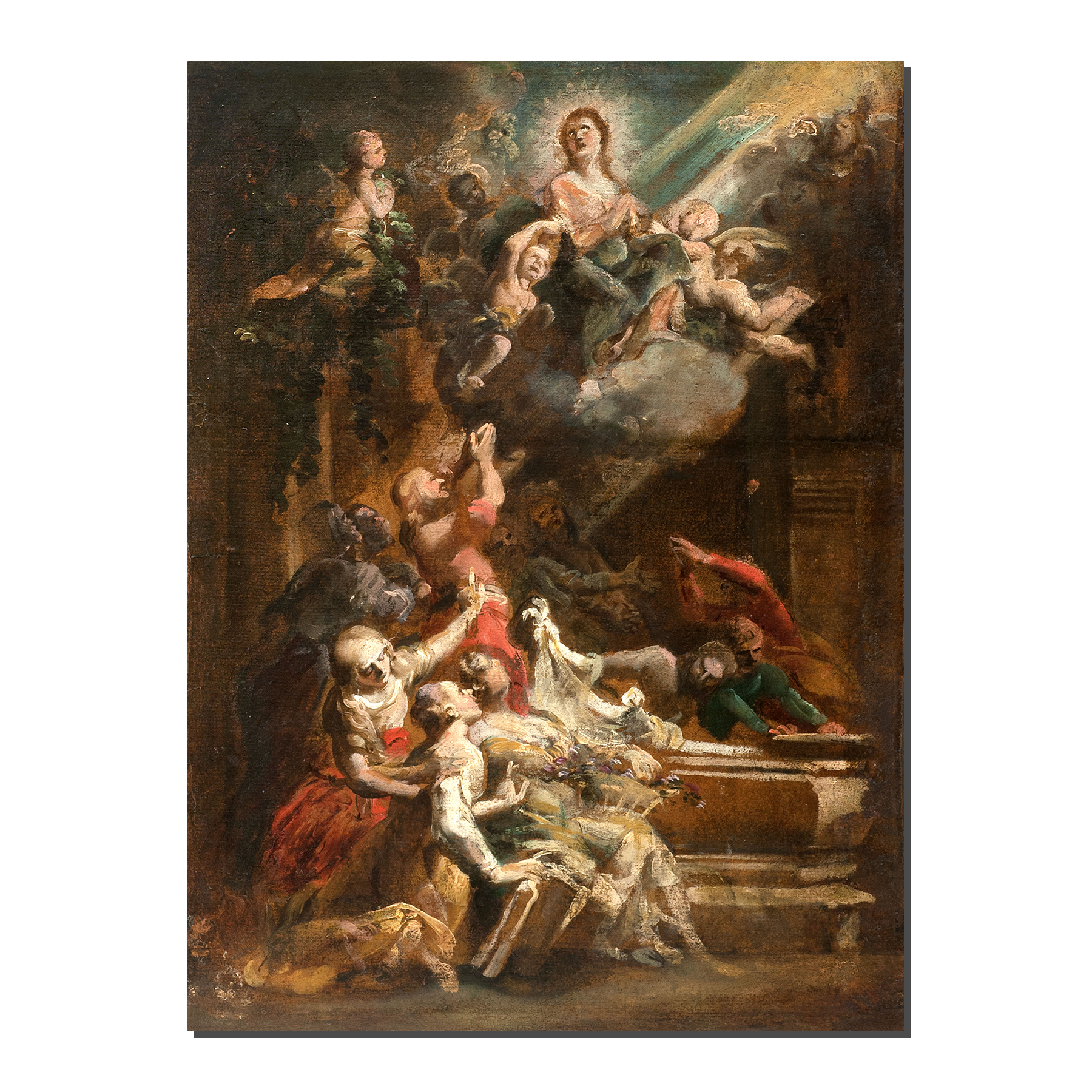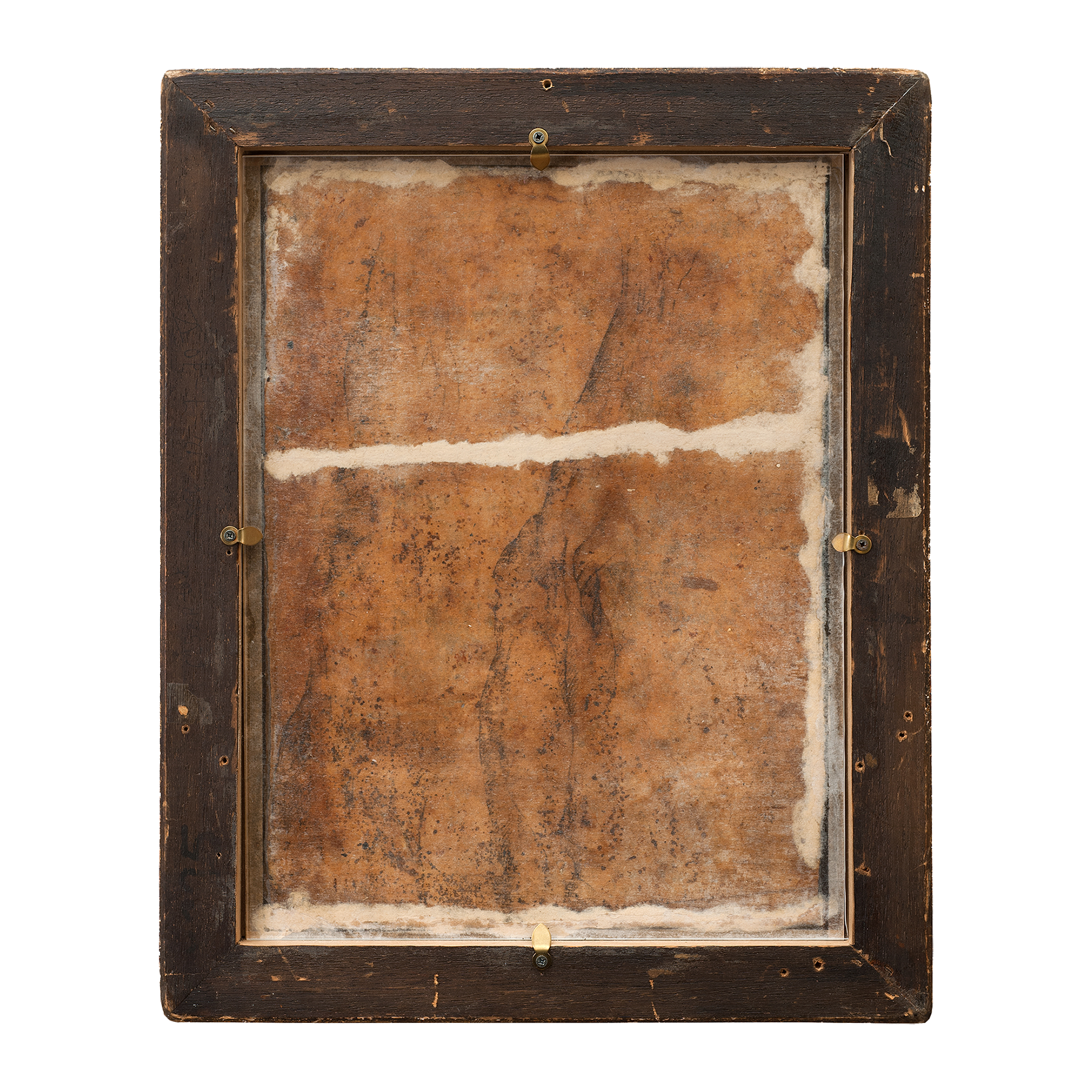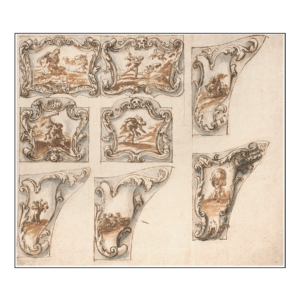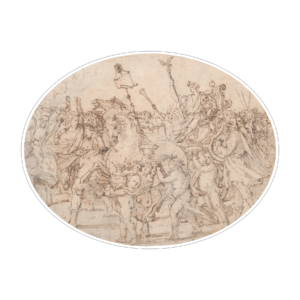Theodoor van Loon
Erkelenz 1581 ou 1582 – Maastricht 1649
The Assumption of the Virgin, recto; Studies of legs, verso
Oil on paper.
360 x 265 mm – 14 3/16 x 10 7/16 in.
Provenance – Dreweatts auction, Newbury (Berkshire), 28/04/2015; England, private collection.
Exhibition – Theodoor Van Loon, un caravagesque entre Rome et Bruxelles, Brussels, Palais des Beaux-Arts (BOZAR), 10 October 2018-13 January 2019 ; Luxembourg, Musée national d’histoire et d’art (MNHA), 15 February 2019 – 26 May 2019.
Literature – Galerie Marty de Cambiaire, Tableaux, 2016, n° 1, p. 6-9 ; Theodoor Van Loon, exh. cat. ed. by Sabine van Sprang, Bozar Books, Fonds Mercator, 2019, no. 35, entry by Sabine van Sprang, p. 180-181, ill. p. 183.
This beautiful oil on paper is a preparatory study for the altar representing the Assumption of the Virgin painted by Theodoor van Loon around 1617, when it was donated to adorn the main altar of the church of Saint-Jean-Baptiste du Grand Beguinage in Brussels (located today at Musées royaux des Beaux-Arts de Belgique in Brussels).
Another preparatory study at the Musée communal de Molenbeek-Saint-Jean (Brussels, 103 x 74 cm) is very close to the final painting, but of uneven quality. It is maybe a studio work painted at “an intermediate stage to be placed between an initial modello, now lost and which would have been made by van Loon alone, and the monumental painting” or “a sort of a workshop exercise” made after the painted version (Jana Sanyova, Sabine van Sprang, Helène Dubois, Catherine Van Herck and Marie-Annelle Mouffe, “La technique picturale de Van Loon: une première approche,” Theodor van Loon, “pictor ingenius” et contemporain de Rubens, Cahiers des Musées royaux des Beaux-arts de Belgique, Brussels, 2011, p. 88).
Our sketch, which shows major variations compared both with the final work and with the one in Molenbeek, is certainly this modello. The overall composition is already in place : in the upper – celestial – part, the Virgin is accompanied by angels and cherubs, one of them holding tendrils in reference to the former name of the beguinage, Notre-Dame de la Vigne, while in the lower – terrestrial – part, the apostles and female saints are gathering around the empty tomb. The emphasis on the women placed on the foreground indicates that the work was destined for a female community.
There are considerable changes in the female figures between this modello and the final work : their faces are turned differently, and two of them are reversed. At this stage of the process their identity is not totally clear: although Mary Magdalen is easily identifiable thanks to her long hair and St. Dorothy her basket of flowers, the woman holding a book, maybe St. Barbara, is not as easily identifiable in the modello. Wearing a turban in the painting, she has become, by an interesting syncretism between classical wisdom and Christian doctrine, a sibyl very much inspired by those of Domenichino.
The somewhat succinct treatment of the figures’ bodies and the presence of pentimenti, such as the one visible on Mary Magdalen’s right arm, indicate that this modello belongs to the phase of research and elaboration of the definitive composition.
A more detailed study is available on demand.





